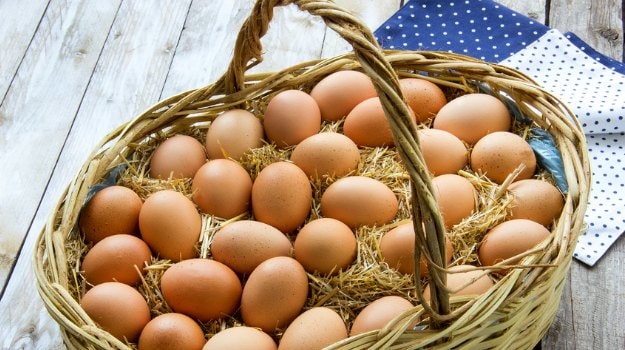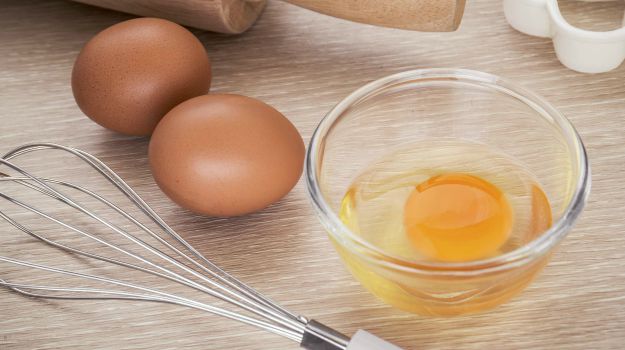For Uncracked Eggs
1. The Float Test All you need is a bowl of cold water and eggs. Place the eggs in the bowl one by one. If they sink to the bottom and lay flat on their sides, they are fresh. If it doesn't sink completely and sticks to one of the sides of the bowl, they aren't very fresh, but still good to eat. If they float on the surface, they have gone bad, and should not be consumed. Egg shells are porous which means that they allow some air to get through. With time, more air may penetrate through the shells and fill up the eggs which makes them buoyant and they tend to float on the surface of water.

2. Sloshing Test Another test to tell whether they are good or bad is to hold an egg up to your ear and shake it. If you can hear a sloshing sound inside the egg, the egg has probably gone bad. If you hear nothing, it's fresh and fine to consume.
For Cracked Eggs
3. The Plate Test Crack the egg onto a plate or any other flat surface. If it's fresh, the yolk should be bright yellow or orange and the white part shouldn't spread much. If your egg is old, the yolk tends to be flatter and the white part will be more watery. However, that may not mean that the eggs have gone bad, they are just old. You can follow it up with the sniffing test. Fresh eggs doesn't have much of a smell, but slightly old eggs have sulphurous odour which will be obvious as soon as you crack open the egg. A rotten egg regardless of whether it is cooked or not will have distinct foul smell.

4. The Yolk and Egg White TestYou can also tell if the egg has gone bad by its looking at its yolk. If the yolk is flat and breaks easily, the egg might be old. If the yolk moves around easily, this means that the egg has weakened with time. The yolk of a fresh egg is usually more bright and yellow in colour, but that is not a reliable test. The color of the yolk is determined by the diet of the hen who laid it, so the shade of yellow or orange may not have much to do with its freshness. Inspect the colour of the egg white or albumen. If the egg white is cloudy it is a fresh egg, but if the white is clear, the egg is old. While inspecting the colour of the egg white, also check if it has a pink or a greenish hue. This means that the egg has been contaminated by Pseudomonas bacteria and is no longer safe for consumption. Similarly, black or green spots inside the egg indicate that it has been contaminated by fungus and must not be consumed.

Now that you know how to tell whether eggs are fresh or not, use this quick tricks to find out and make sure you always consume the best quality.
About Sushmita SenguptaSharing a strong penchant for food, Sushmita loves all things good, cheesy and greasy. Her other favourite pastime activities other than discussing food includes, reading, watching movies and binge-watching TV shows.









